Waheela
The Great White Wolf of Northern Canada
On May 16, 2018, a Montanan rancher shot and killed a strange wolf-like creature on his property. According to Montana Fish, Wildlife and Parks (FWP) officials:
“The animal came within several hundred yards of the rancher’s livestock. He shot it and reported it as required by law. The animal was a young, non-lactating female and a canid, a member of the dog family, which includes dogs, foxes, coyotes and wolves…
“The animal originally was reported as a wolf, but several Fish, Wildlife and Parks’ wolf specialists looked at photos of the animal and collectively doubted it was a purebred wolf: the canine teeth were too short, the front paws to small and the claws on the front paw were too long…”
This animal was so strange-looking that FWP officials submitted some of its tissue for DNA analysis. The results of this test are forthcoming.
The Shunka Warak’in
For many cryptozoology enthusiasts (cryptozoology being the study of strange, unknown, or hidden ‘animals’), this strange Montanan canine evokes the Shunka-Warakin– a monster of Ioway Indian mythology.
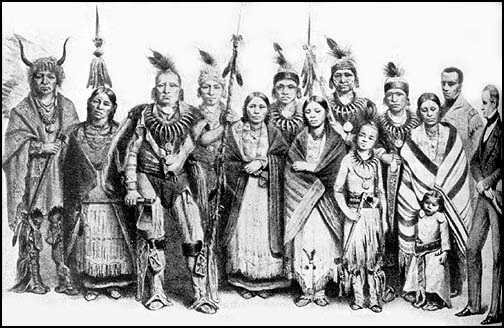
The Ioway Indians are a Sioux people whose ancestral homelands include the Great Plains of Southern Wisconsin and Eastern Iowa. According to an old Ioway legend, a ferocious, hyena-like animal once roamed the American prairies. Due to its habit of killing and devouring dogs, the Ioway called this creature the “Shunka Warak-in“, which translates to “Carrying-Off-Dogs”.
The Legend
Every night, this creature snuck into Ioway camps. And every morning, a few more dogs were found missing. When the Ioway figured that these depredations had gone on long enough, they decided to ambush the animal. Armed with muskets and bows and arrows, they crouched in the darkness beside their teepees not far from where their dogs were tethered.
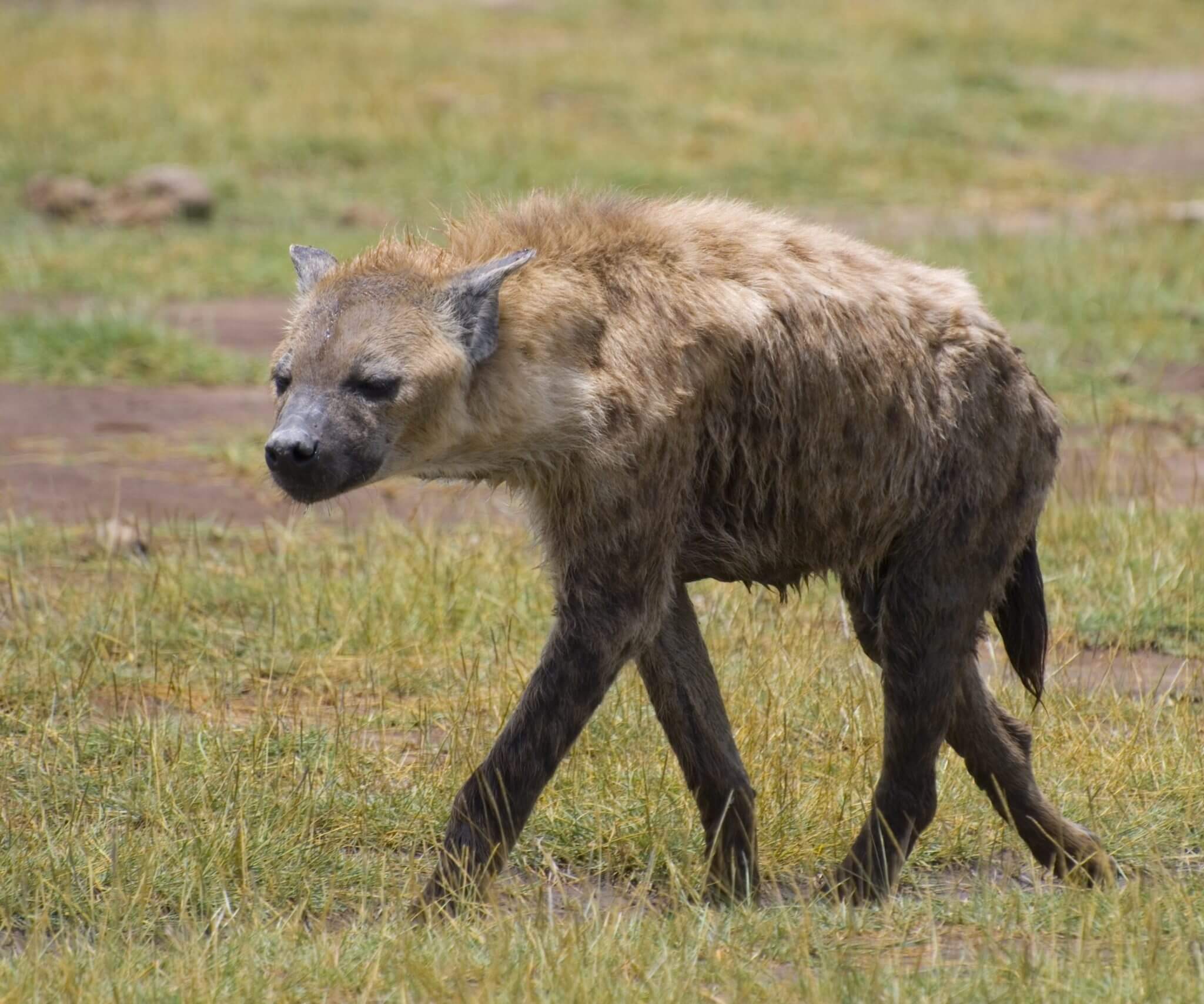
Suddenly, a strange, wolf-like creature slinked into camp from out of the darkness. The Ioway had never seen anything like it before. The baffled braves sprang from their hiding places and peppered the animal with arrows and musket balls. Incredibly, the missiles failed to bring the creature down. In fact, they only seemed to make it angry. With a bloodcurdling shriek, the animal lunged at its tormentors. The warriors drove it back with their spears and war clubs. After a tremendous struggle, the animal retreated back into the darkness. The Ioway decided to follow it.
The Ioway braves tracked the creature throughout the night and most of the following day. Eventually, they succeeded in cornering it. The creature put up a savage last stand and fought to the bitter end. When it finally fell under the Ioways’ guns, it cried just like a human being.
Once the creature was dead, the braves skinned its carcass, painted its hide, and placed it in a medicine bundle. The Ioway believed that whoever wore this medicine bundle in battle would be immune to enemy bullets and arrows, much like the indomitable monster whose skin it contained.
Lance Foster’s Theory
In 1991, a graduate student of Iowa State University named Lance Foster rediscovered the legend of the Shunka Warak’in. The legend reminded Foster of a mysterious stuffed canine which was once on display at a small museum in Henry Lake, Idaho. Foster knew that the museum had closed down long ago, and that the stuffed animal was missing. He suspected that the lost curio might be a Shunka Warak’in specimen- a relative of the vicious, dog-eating monster of Ioway lore.
Foster related his theory to Loren Coleman, a prominent American cryptozoologist. Using the information that Foster gave him, Coleman unearthed the fascinating backstory behind the stuffed animal at Henry Lake. He included this story in his 1999 book Cryptozoology A to Z.
The Tale of the Ringdocus
According to this story, a family by the name of Hutchins traveled by stagecoach to Montana’s Madison River Valley sometime in the 1880’s. There, the family’s patriarch, Israel Ammon Hutchins, established a ranch. No sooner had he and his family settled into their new routine, however, than their lives were turned upside down by the arrival of a strange and unwanted visitor. Israel’s grandson, zoologist Dr. Ross Hutchins, described the incident in his 1977 book Trails to Nature’s Mysteries: The Life of a Working Naturalist.
According to the Dr. Ross, Israel heard his dogs barking one winter morning and headed over to investigate. He discovered a dark, wolf-like beast chasing his wife’s geese. He shot at the animal with his rifle but missed. It ran down the river and disappeared into the brush.

Several days later, members of the Hutchins family spied the mysterious animal at dawn. They saw it several more times around the ranch. Their neighbours also saw the creature around their own ranch, located about fifteen miles down the river. Those who saw the animal described it as being nearly black, with high shoulders and a back that sloped downwards like a hyena. At night, the animal made haunting vocalizations which almost sounded like human screams.
One morning in late January, Israel Hutchins, alerted by the barking of his dogs, saw the creature and shot it dead. “Just what the animal was is still an open question,” wrote Dr. Ross Hutchins. After its death, the Hutchins family donated the creature’s body to a man named Sherwood. Sherwood stuffed the animal and kept it in his aforementioned museum at Henry Lake. He dubbed the beast “ringdocus“.
Conclusion
In November 2007, another grandson of Israel Hutchins named Jack Kirby rediscovered the stuffed ringdocus in the Idaho Museum of Natural History. Sure enough, the animal is a strange, wolf-like creature with dark coat, a narrow snout, and a back that slopes downwards like a hyena’s. Kirby repossessed the mount in his grandfather’s name before donating it to the Madison Valley History Museum in Montana, where it remains to this day. Kirby neglected to submit its hair for DNA analysis, preferring that the mystery of its identity live on. To date, no such DNA analysis has been conducted.
Sightings
Recent events suggest that the ringdocus might not be an isolated phenomenon. According to cryptozoologist Mark A. Hall, the 1990’s saw numerous reports of “mean-looking, near wolflike and hyena-like animals” in Alberta, Canada, as well as in the States of Nebraska, Iowa, and Illinois.
Then, in 2005 and 2006, a mysterious wild animal invaded farmers’ properties all over Montana, killing a total of 120 sheep and seriously mauling many more. On November 2, 2006, the 106-pound culprit was shot in Garfield County, Montana, by state Wildlife Service agents. The creature’s fur had a strange hue that ranged from red to orange to yellow, and appeared to be something other than a gray wolf, the only animal it even remotely resembled. Despite postulations that the animal was a Shunka Warak’in, the Montana Fish, Wildlife, and Parks Department identified it as a four-year-old male wolf with abnormally red fur.
Will this new mystery canine, shot last week on a Montanan ranch, similarly prove to be a wolf? Or will the DNA analysis confirm it as an entirely new species, or a relic of Montana’s prehistoric past?
Identity
In his aforementioned book, Loren Coleman theorized that the ringdocus (and, by extension, the Shunka Warak’in) might be a relict Borophagus– an ancient, bone-crushing, hyena-like dog known to have lived in North America during the Pleistocene Epoch. Alternatively, cryptozoologist Jerome Clark put forth the notion that the animal might be a surviving Hyaenodon montanus, a species of carnivorous mammal believed to have gone extinct during the Obliocene Epoch.
Many cryptozoologists have attempted to draw a connection between the ringdocus / Shunka Warak’in and an even more mysterious creature from Northern Canada- a monster known today as the “Waheela”.
The Waheela
The Waheela is said to hail from the watershed of the South Nahanni River in Canada’s Northwest Territories- a rugged National Park and a Mecca for extreme outdoor adventurers. The Nahanni Valley, as it is sometimes called, is a place of myth and mystery, home to legends of lost gold mines, mysterious decapitations, forgotten tribes, and prehistoric monsters. To learn more about these chilling tales, please check out our non-fiction book ‘Legends of the Nahanni Valley‘.
The word ‘Waheela’ is not a local Indian word, nor does it have subarctic origins. In fact, it was first introduced to the world by Ivan T. Sanderson, an eccentric zoologist and adventurer and a pioneer in the field of Fortean- the study of unexplained phenomena. In fact, Sanderson is considered by some to be one of the Founding Fathers of Cryptozoology.
In October 1974, a year after Sanderson’s death, one of Sanderson’s unpublished articles, entitled The Dire Wolf, appeared in the magazine Pursuit. This article described a giant white wolf which lived in the Nahanni Valley. Sanderson called this creature the ‘Waheela’ after a mysterious wolf-like monster said to haunt the forests of Northern Michigan.
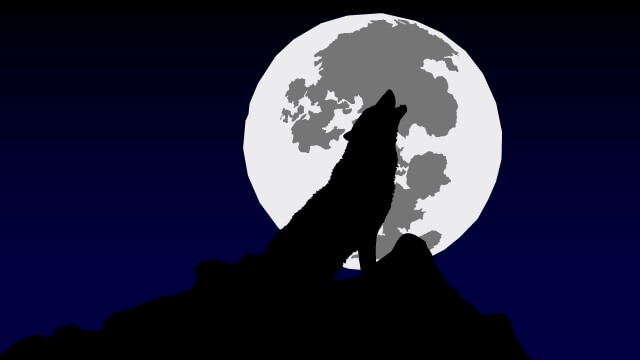
The American Expeditionary Society
Sanderson’s article, coupled with some of his private correspondence, describe how he- and, by extension, much of the Western world- first came to learn of this mysterious white wolf of the North Country. Back in the mid 1960’s, Sanderson was approached by a young mechanic from Philadelphia named Frank Graves. Graves had read Sanderson’s book Abominable Snowman: Legend Come to Life, one of the first works to explore the Sasquatch-Yeti phenomenon, and decided to make a trip to the Nahanni Valley in order to investigate a hunch that Sasquatch-like creatures lived in the region. He approached Sanderson in order to ask the seasoned adventurer for advice which might aid him in his own expedition.
Sanderson hooked Graves up with four men who had also approached him for advice, and who also hoped to explore the Nahanni Valley. These men were members of the so-called ‘American Expeditionary Society’ (AES), an academic club comprised of about thirty American university students who hoped to resurrect the dying art of old-fashioned exploratory expeditions. That summer, Frank Graves and his four AES companions flew to Fort Simpson, Northwest Territories, purchased a flat-bottomed scow with a motor, and made their way down the Liard River and up the South Nahanni.
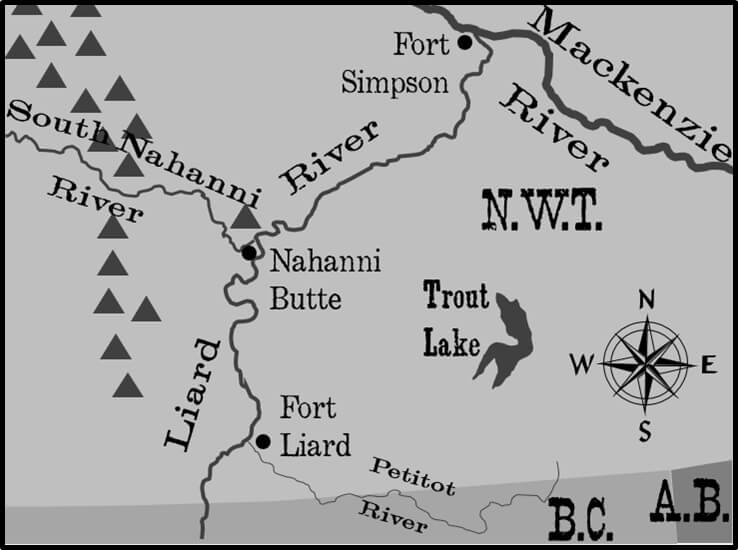
The five companions established a base camp deep in the Nahanni Valley, at the base of an enormous waterfall called Virginia Falls. From there, Graves made several expeditions above the falls on foot. At all times, he was accompanied by an Indian guide.
Frank Graves’ Encounter
During one such excursion, Graves’ Indian companion brought along a dog. He hoped that his canine companion might be able to flush out any game they came across. The trio worked their way up a glen which led from the river. Eventually, they came to a small plateau covered with grass and brush. Sure enough, Graves’ native companion spotted some wild fowl in the timber below. With his dog by his side, he ambled down the slope towards them, hoping to bag something for dinner.
Frank Graves opted to stay up on the plateau in case any game appeared in his partner’s absence. He was armed with a double-barreled 12-gauge shotgun, and would be able to take any game that came his way.
Suddenly, there was a rustle in the bushes not far from where Graves was standing. Thinking that the hunter’s dog might be approaching, he did not raise his gun. He regretted his laxity when an enormous, snow-white animal ambled out of the brush. At first, Graves took this animal to be a polar bear. When he looked a little closer, however, he saw that it looked more like a gigantic dog. It stood up on long legs, more like a dog or a wolf. It had a wide, flat head and rather short ears. Graves panicked and fired both barrels of his shotgun at the creature. The animal hardly seemed to notice. It slowly turned away and wandered back into the forest. With shaking fingers, Graves slipped another shell into his weapon and fired at the creature’s rear. Amazingly, the animal maintained its leisurely pace as if nothing had happened.
The Great White Wolf of the North
Graves’ Indian companion quickly returned, thinking that Graves had killed some game. When the white man related his terrifying experience to his red companion, the native insisted that they return to their boat and leave the area at once. Only when they reached the safety of their base camp downriver did the native explain that the animal Graves encountered was not an extremely large wolf, but rather another animal entirely. These were solitary creatures, not pack animals like grey wolves. They were much larger than wolves, had splayed feet, and had thick, heavy tails. These beasts, the Indian said, were quite rare. Most of them lived further to the north. Some of them made annual trips into the Mackenzie Mountains, of which the Nahanni Valley is a part. And a few stayed in the Nahanni Valley all year round.
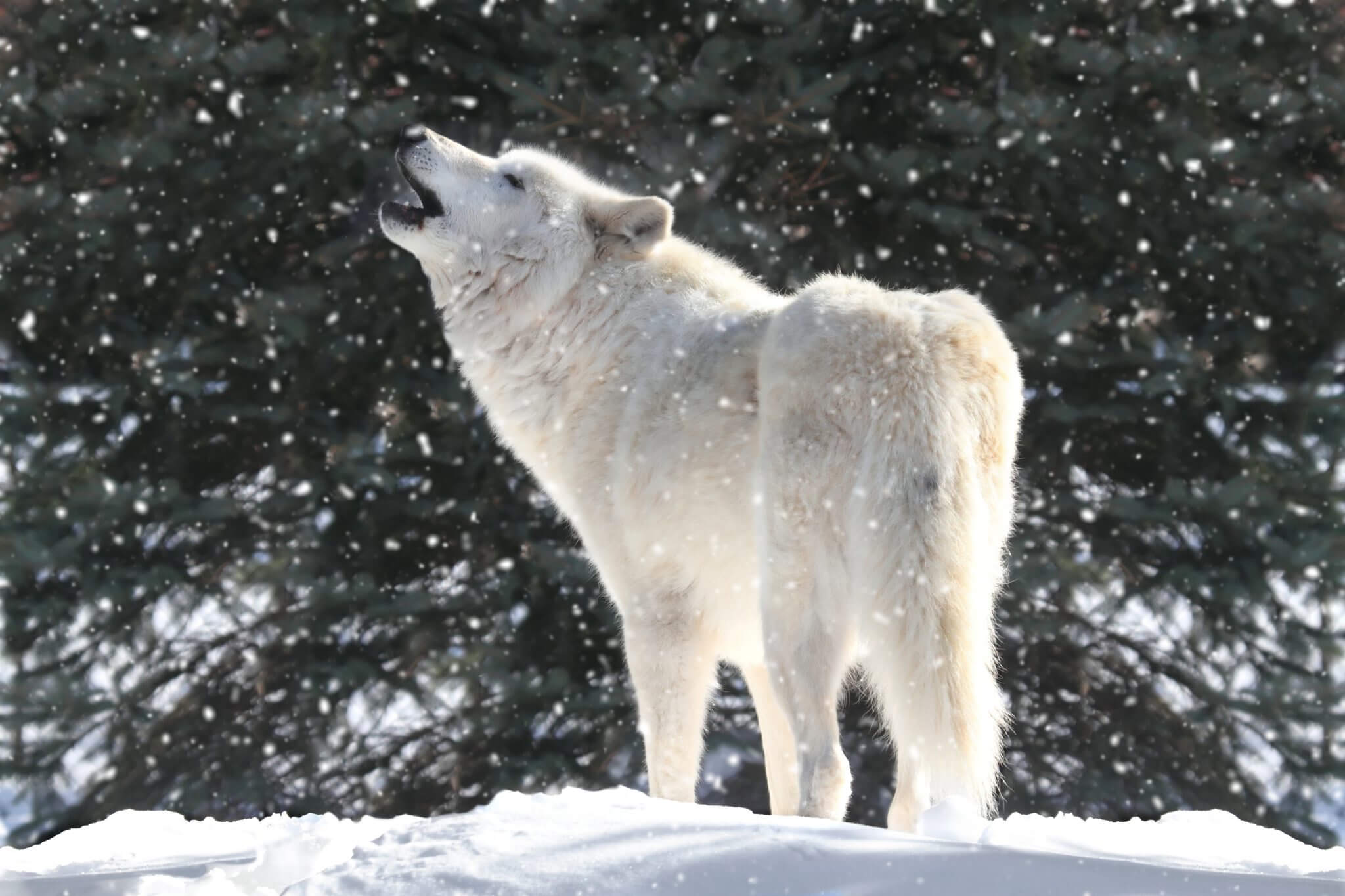
Another Description
Interestingly, Frank Graves and his Indian companion were not the only men to speak of this giant white wolf-like creature of the Northland.
In a letter to Ivan Sanderson, a man (whose signature this author was unable to decipher) claimed that in October 1970, while visiting the town of Moosenee in Northern Ontario, he heard tell of this creature from the lips of a Dene Indian who claimed to hail from Nahanni Country. The Dene were terrified of these monsters, the man’s Indian informant claimed. They were impossible to kill. The animal looked a little like a Husky/Alsatian crossbreed, but was many times larger. Its rear was more akin to that of a Saint Bernard. It had an 11-foot-long body and a 4-foot-long tail. “The rear portion of the body apparently slopes away in the manner of a bear,” the writer wrote. The head appears to be low slung and flattened and having a broad muzzle. Colours range from brown to white.
“Its habits are disgusting, if it exists,” the letter writer continued. “Part carrion eater, it can take a bear apart, but prefers to live on injured or young animals. Its delight is to snatch the young from the mother whilst she is in the process of giving birth. Also said to attack man on sight. Almost invincible, he has but one enemy.
“Now hang on to your hat!
“That enemy is a…”
[Check out our book to find out!]
More Descriptions
Other descriptions of the great white wolf of the North Country are eerily consistent with that of the letter writer’s Indian informant. For example, in The Dire Wolf, Ivan Sanderson mentioned that an old friend of his- a professional cameraman-turned-film director named Tex Zeigler- “made a few points about what he called the ‘great white wolf'” of Alaska back in the 1950’s, long before Frank Graves’ encounter. Before he became involved in the film industry, Zeigler worked as a prospector, then as a trader, and finally as a pilot in the Alaskan wilderness, earning himself the epithet the ‘Flying Trader.’ During his days in the Norht Country, he came across gigantic, solitary white wolves on a number of occasions.
Similarly, in a letter-to-the-editor published in Volume 2, No. 1, of the online Fortean magazine North American BioFortean Review (2000), a man who identified himself as Paul W., and who worked in the “outdoors industry”, described an enormous white wolf which his good friend encountered in the wilderness of Northern Ontario, not far from his hunting lodge. He estimated that this animal, which was feasting on a moose carcass at the time, weighed at least 200 pounds. It had a large, broad head, and its front legs were longer than its rear legs. It did not look much like a wolf, and was larger and more robust than even a big alpha male wolf should be. Its tracks were a whopping eight inches wide.
Theories
Some of those who have commented on the Waheela over the years have speculated that it is simply an unusually large wolf, perhaps a genetic freak shunned by its pack for its gigantism. Others suggest that the lone white ‘wolf’ of the Northland might actually be some sort of white bear, perhaps a “spirit” or Kermode bear, or a starving albino black bear.
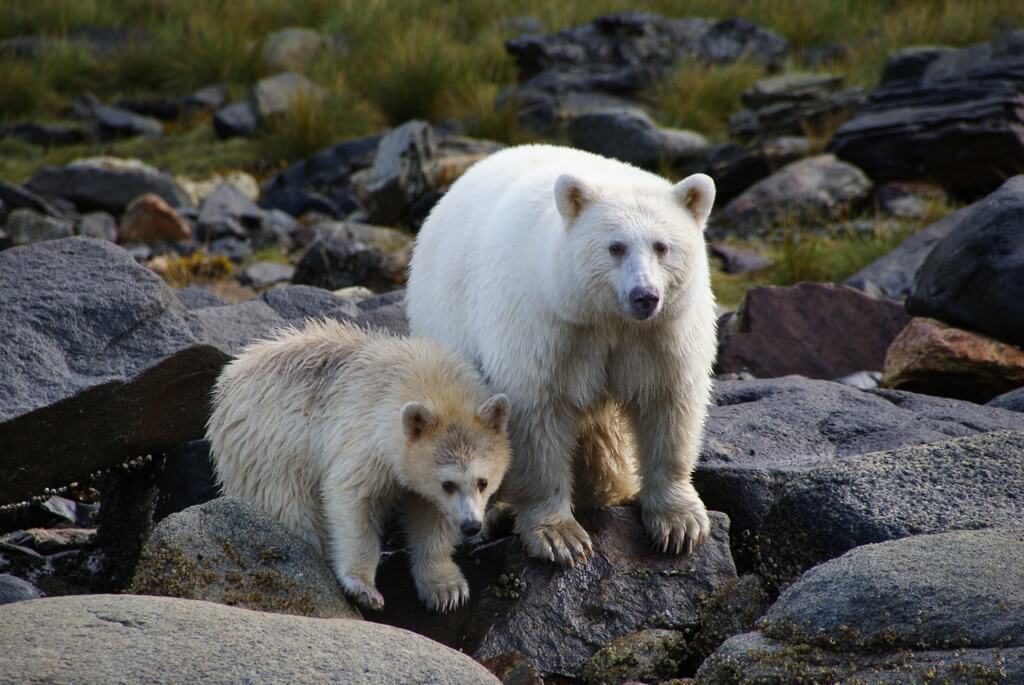
Perhaps the most intriguing theory regarding the nature of the Waheela- first put forth by Ivan Sanderson in The Dire Wolf– contends that the great white northern wolf is an Amphicyon, an ancient, bone-crushing canid commonly known as a “bear dog”. These animals were neither dogs nor bears, but some of them were the size of the largest living bears, and some had doglike features. Today, it is believed that these creatures died out oat the end of the Miocene Epoch, the geological epoch preceding the Pliocene. Is it possible that relict populations of these creatures still exist in remote corners of the continent like the Nahanni Valley?
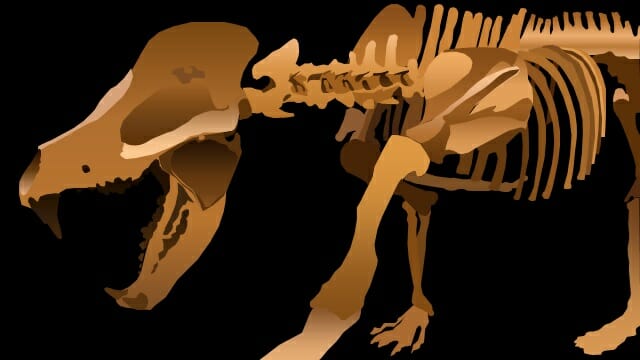
Of course, another theory contents that the Waheela is the same species as the Shunka Warak’in, the mysterious canine of Montana and the American Midwest. Despite the fact that the ringdocus specimen, at least, is much smaller than the great white wolf reported in the subarctic, and has a completely different physiology, both animals are mysterious canids that appear to be very difficult to kill, and to be endowed with the ability to crush bones. Perhaps the DNA analysis of the mysterious creature shot a week ago in Montana will clear up this mystery once and for all.
Want to learn more?
If you enjoyed this article and would like to learn more about the Waheela, please check out our book Legends of the Nahanni Valley, available on Amazon and Kindle.

Gerry Burnie
Very interesting, and unknown to me before. I will be interested to know the results of the tissue analysis.
I am a Canadian writer, too. I write Canadian historical fiction and hope to write a novel set in every province. So far, I have covered Ontario, Saskatchewan, British Columbia, and my forthcoming novel “The Brit, Kid Cupid, and Petunia is located in Alberta (PincherCreek).
I have shared your article on the FB page.
Hammerson Peters
Hi Gerry,
Good to hear from you again! Thanks for your interest, and best of luck with your upcoming book.
HP